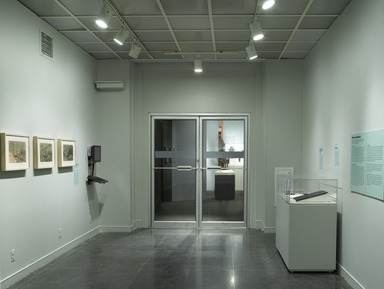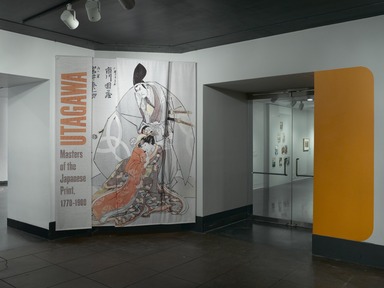

Utagawa: Masters of the Japanese Print, 1770–1900, March 21, 2008 through June 15, 2008 (Image: DIG_E2008_Utagawa_001_PS2.jpg Brooklyn Museum photograph, 2008)
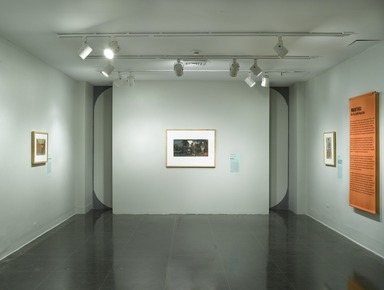
Utagawa: Masters of the Japanese Print, 1770–1900, March 21, 2008 through June 15, 2008 (Image: DIG_E2008_Utagawa_002_PS2.jpg Brooklyn Museum photograph, 2008)
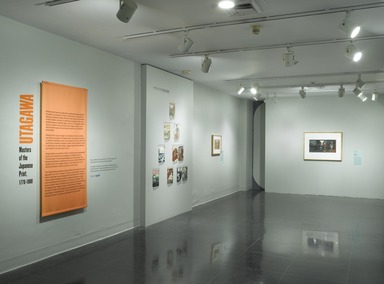
Utagawa: Masters of the Japanese Print, 1770–1900, March 21, 2008 through June 15, 2008 (Image: DIG_E2008_Utagawa_003_PS2.jpg Brooklyn Museum photograph, 2008)

Utagawa: Masters of the Japanese Print, 1770–1900, March 21, 2008 through June 15, 2008 (Image: DIG_E2008_Utagawa_004_PS2.jpg Brooklyn Museum photograph, 2008)
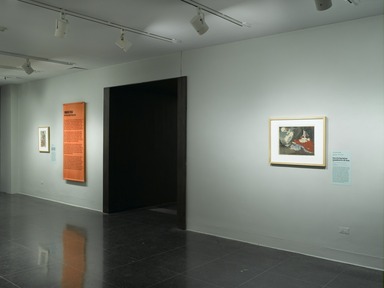
Utagawa: Masters of the Japanese Print, 1770–1900, March 21, 2008 through June 15, 2008 (Image: DIG_E2008_Utagawa_005_PS2.jpg Brooklyn Museum photograph, 2008)
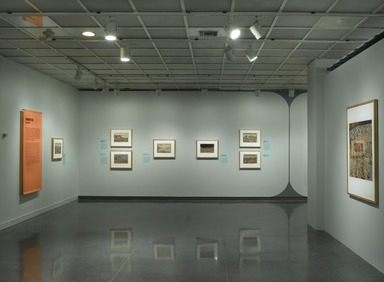
Utagawa: Masters of the Japanese Print, 1770–1900, March 21, 2008 through June 15, 2008 (Image: DIG_E2008_Utagawa_006_PS2.jpg Brooklyn Museum photograph, 2008)

Utagawa: Masters of the Japanese Print, 1770–1900, March 21, 2008 through June 15, 2008 (Image: DIG_E2008_Utagawa_007_PS2.jpg Brooklyn Museum photograph, 2008)

Utagawa: Masters of the Japanese Print, 1770–1900, March 21, 2008 through June 15, 2008 (Image: DIG_E2008_Utagawa_008_PS2.jpg Brooklyn Museum photograph, 2008)
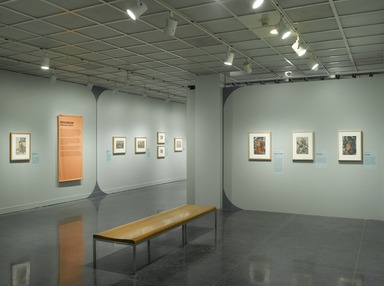
Utagawa: Masters of the Japanese Print, 1770–1900, March 21, 2008 through June 15, 2008 (Image: DIG_E2008_Utagawa_009_PS2.jpg Brooklyn Museum photograph, 2008)
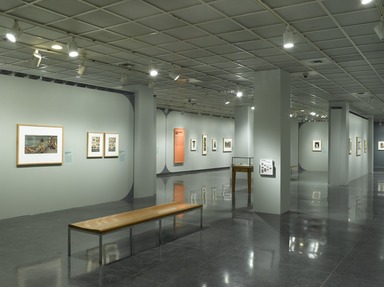
Utagawa: Masters of the Japanese Print, 1770–1900, March 21, 2008 through June 15, 2008 (Image: DIG_E2008_Utagawa_010_PS2.jpg Brooklyn Museum photograph, 2008)
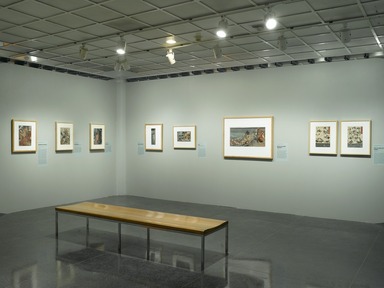
Utagawa: Masters of the Japanese Print, 1770–1900, March 21, 2008 through June 15, 2008 (Image: DIG_E2008_Utagawa_011_PS2.jpg Brooklyn Museum photograph, 2008)
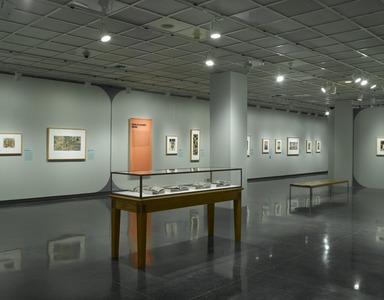
Utagawa: Masters of the Japanese Print, 1770–1900, March 21, 2008 through June 15, 2008 (Image: DIG_E2008_Utagawa_012_PS2.jpg Brooklyn Museum photograph, 2008)

Utagawa: Masters of the Japanese Print, 1770–1900, March 21, 2008 through June 15, 2008 (Image: DIG_E2008_Utagawa_013_PS2.jpg Brooklyn Museum photograph, 2008)
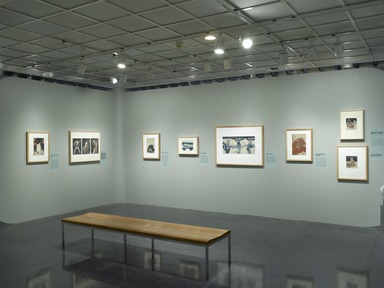
Utagawa: Masters of the Japanese Print, 1770–1900, March 21, 2008 through June 15, 2008 (Image: DIG_E2008_Utagawa_014_PS2.jpg Brooklyn Museum photograph, 2008)

Utagawa: Masters of the Japanese Print, 1770–1900, March 21, 2008 through June 15, 2008 (Image: DIG_E2008_Utagawa_015_PS2.jpg Brooklyn Museum photograph, 2008)
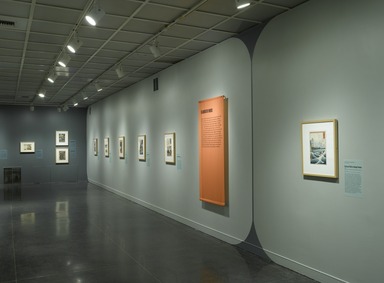
Utagawa: Masters of the Japanese Print, 1770–1900, March 21, 2008 through June 15, 2008 (Image: DIG_E2008_Utagawa_016_PS2.jpg Brooklyn Museum photograph, 2008)

Utagawa: Masters of the Japanese Print, 1770–1900, March 21, 2008 through June 15, 2008 (Image: DIG_E2008_Utagawa_017_PS2.jpg Brooklyn Museum photograph, 2008)
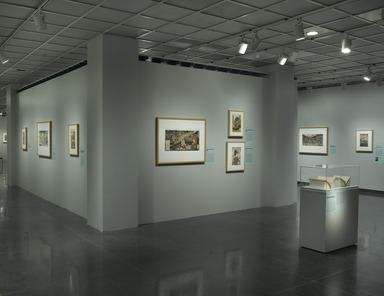
Utagawa: Masters of the Japanese Print, 1770–1900, March 21, 2008 through June 15, 2008 (Image: DIG_E2008_Utagawa_018_PS2.jpg Brooklyn Museum photograph, 2008)

Utagawa: Masters of the Japanese Print, 1770–1900, March 21, 2008 through June 15, 2008 (Image: DIG_E2008_Utagawa_019_PS2.jpg Brooklyn Museum photograph, 2008)

Utagawa: Masters of the Japanese Print, 1770–1900, March 21, 2008 through June 15, 2008 (Image: DIG_E2008_Utagawa_020_PS2.jpg Brooklyn Museum photograph, 2008)
Utagawa: Masters of the Japanese Print, 1770–1900
-
Utagawa: Masters of the Japanese Print, 1770–1900
Japanese artists have long celebrated the relationship between teacher and student by comparing it to that of a father and son. Young artists adopt new professional names that refer to their teachers, and schools of artistic tradition can often be understood as lineages in which each generation passes an aesthetic legacy to the next. The Utagawa school was one of Japan’s most prominent artist lineages, spanning more than one hundred years and dominating the period’s most influential artistic medium.
Although the first ukiyo-e imagery was created more than a hundred years before its founding, the Utagawa school was uniquely successful in creating the illustrations, prints, and paintings that came to define the ukiyo-e genre. Hundreds of designers worked under the Utagawa name or claimed ties to its artistic lineage. Utagawa school artists produced more than half of all extant ukiyo-e prints.
Utagawa Toyoharu founded this “family” of artists late in the eighteenth century, and it remained active throughout the nineteenth century. Through a system of studio apprenticeships and name granting, the Utagawa print designers developed into two major branches headed by Utagawa Toyohiro and Utagawa Toyokuni. Their students went on to define and dominate virtually every genre of ukiyo-e prints.
The Utagawa lineage developed stylistic traditions that evolved from one generation to the next. The legacy of Toyoharu led subsequent generations to create deep, open landscapes that were familiar to the modern viewer. Toyokuni developed a system for depicting well-known actors and roles that became the standard for all future actor portraits. The same long-faced model of feminine beauty appears through generations of Utagawa school imagery. Despite a shared aesthetic heritage, however, the artists of the Utagawa school developed personal areas of specialization in separate genres. It was this dissemination of talent that allowed the school to succeed in every field of the print market. -
From Edo to Meiji: The Print in a Rapidly Changing Japan
The Edo period (1615–1868) was an era of relative peace in Japan, with the nation unified under a single military leader, the Tokugawa shogun, whose capital was in Edo, or modern-day Tokyo. Without war, the role of Japan’s powerful samurai class changed dramatically, and many warriors moved to urban centers to assume administrative roles. Cities grew rapidly in both size and influence, and Japan’s agrarian economy gave way to a new atmosphere of commercialism and cosmopolitanism.
One of the most notable developments in Japan’s new urban culture was the blossoming of entertainment zones featuring kabuki theaters, teahouses, and brothels. In the Edo period, these districts spawned a vibrant culture of their own, offering a heady mix of sexuality, celebrity, and high fashion. Because of the superficial nature of so much of what transpired in this environment, the Japanese called it the “floating world,” or ukiyo. Images of this world were called ukiyo-e.
The artistic medium that best served both the fleeting trends and the egalitarian social structure of the floating world was the woodblock print. Produced by teams of artisans and marketed by savvy publishers, prints became a means of disseminating the work of talented artists at a low price. Creative energy and market pressure combined to inspire artists and publishers to generate increasingly sophisticated imagery using advanced printing techniques.
In 1859, Japan ended a long period of self-enforced isolation, opening its ports to foreign trade. Soon thereafter, the shogunate was overthrown and the emperor, whose role had been largely ceremonial for centuries, was reestablished as the political leader of Japan. The young Emperor Meiji further modernized Japan by encouraging his people to embrace new ideas and technologies that were flooding in from the West. Ukiyo-e prints continued to flourish in the Meiji period, with new ink colors and subjects added, but over time both the floating world and the prints that celebrated it gave way to other forms of entertainment. -
Establishing a Name: Utagawa Toyoharu
Utagawa Toyoharu founded the great Utagawa line of artists during the second half of the eighteenth century. Although details of Toyoharu’s life are incomplete, it is thought that he was born in western Japan and moved to Edo, becoming a student of Toriyama Sekien (1712–1788), who was also the teacher of the celebrated ukiyo-e artist Kitagawa Utamaro (1753–1806). Although Toyoharu created prints of beautiful women and actors, his greatest success came as a designer of perspective pictures called uki-e, or “floating pictures.”
Despite Japan’s isolationist policies in the Edo period, Western engravings made their way into the hands of Japanese artists. One of the European pictorial conventions that made the greatest impression on this new audience was the creation of an illusion of deep space on the flat page. Toyoharu managed to master several techniques for creating this illusion—most notably single-point perspective—and made it one of the signature traits of his work. During his lifetime he established uki-e as a major printmaking genre. Using strong diagonals and diminishing scale to depict deep, dramatic vistas, Toyoharu captured contemporary urban life including grand summer festivals, regal processions, and lively interior scenes of kabuki theaters. His work in this genre laid the groundwork for later developments in landscape prints by his rival Katsushika Hokusai (1760–1849) and third-generation Utagawa artist Utagawa Hiroshige. -
The Studios of Toyohiro and Toyokuni
Utagawa Toyoharu’s two most celebrated students were Utagawa Toyohiro and Utagawa Toyokuni. These artists developed the Utagawa school into two major branches that defined and dominated all the major genres of ukiyo-e prints in the nineteenth century. Building on Toyoharu’s instruction, Toyohiro and Toyokuni both excelled in the established genres of beautiful women (bijin-ga) and actor prints (yakusha-e), creating an easily identifiable figural style for artists studying and working under the Utagawa name.
Toyohiro was far less prolific than Toyokuni and is known less for his body of print designs than for his role as teacher. Many of his prints share a distinctive, restrained elegance and delicacy. His work in landscape prints (fūkei-ga), with their high, bird’s-eye perspective and occasional use of cropped foreground elements, was particularly noteworthy for its influence on his celebrated pupil, landscape artist Utagawa Hiroshige.
Toyokuni’s most notable contribution was the establishment of a systemized approach to kabuki actor prints that emphasized the actors’ individual facial features and became the standard for theater-related depictions. Extremely productive and clearly familiar with the tastes and interests of the moment, Toyokuni served as a model of commercial success. -
Claiming the Lineage: Later Artists of the Utagawa School
The greatest print artists of the Meiji period (1868–1912) all laid claim to the Utagawa school lineage. Toyohara Kunichika, Kawanabe Kyōsai, and Tsukioka Yoshitoshi were among the final generation of ukiyo-e artists who carried on the creative traditions of the woodblock print medium that had prospered in the preceding century. After the Meiji Restoration in 1868, Japan embarked on a concerted effort to Westernize, and many new technologies appeared on Japan’s shores. New art technologies—specifically photography and lithography—brought intense competition to traditional ukiyo-e prints.
Kunichika, Kyōsai, and Yoshitoshi responded in their own ways to this new commercial environment, often working within the confines of genres established by previous Utagawa school artists. Kunichika experimented with ways to mimic photography in his kabuki prints, while Kyōsai satirized Japan’s enthusiastic appropriation of Western costume and customs. Yoshitoshi was subtler in his response, revitalizing traditional themes while creating one of the most celebrated designs of a beautiful-woman print from this period. All three artists found success with their depictions of mythic and fantasy subjects, which unlike landscape and portraiture could not be captured by the photographer. Armed with highly individual visions and considerable creative energy, Kunichika, Kyōsai, and Yoshitoshi were integral to the continuation of the Utagawa school’s creative and stylistic legacy well into the closing decades of the nineteenth century. -
Creative Specialization: Hiroshige, Kuniyoshi, and Kunisada
Utagawa Hiroshige, Utagawa Kuniyoshi, and Utagawa Kunisada (also known as Toyokuni III) were the most prominent artists of the Utagawa school, dominating the print market of nineteenth-century Edo. Although each artist carried on the traditions of the Utagawa school and continued to produce works in all genres, their individual success and fame was greatly enhanced by their celebrated specialties.
Hiroshige specialized in landscape prints while also nurturing the burgeoning genre of pictures of famous places. His compositions are celebrated for their beautiful broad vistas glimpsed through elements placed in the near foreground, and for their masterful representations of atmospheric conditions.
Kuniyoshi was slow to find success until he created a seminal series of warrior prints. His work is admired for its dynamic compositions and for highly original representations of fantastic figures and situations. Kunisada, who eventually changed his name to Toyokuni III after his teacher, found unprecedented success as the quintessential designer of actor prints. Extremely prolific during his long career, he designed prints that addressed nearly every major trend and cultural pursuit of his time. -
Collaborative Works
Collaborative works became more common in Edo print culture as the publishing world grew more complex and susceptible to purchasing trends. A print or series that could boast the signatures of more than one well-known artist was likely to draw greater attention in a highly competitive market. Whether the artists worked in tandem on a single composition or contributed independent designs to a shared print series, the artists’ name recognition became critical to the success of the finished product. Collaborations often served to highlight the individual creative specialties of the contributing artists, further solidifying their reputations as masters of a specific genre. This is particularly visible in several collaborations exhibited here, in which Hiroshige contributed his celebrated landscapes to compositions featuring figures by Kunisada. The placement of an artist’s signature often clarified which aspect he had contributed. Collaborations between Utagawa school artists also helped to maintain and celebrate a unified Utagawa school identity. -
Utagawa Style and Market Dominance
In addition to the three major artists—Hiroshige, Kuniyoshi, and Kunisada—there were some five hundred lesser-known print designers who at one time studied and worked under the Utagawa name. This roster includes artists who received from their famed teachers names combined with “yoshi” (from Kuniyoshi) and “sada” (from Kunisada). A major factor in the dominance of the Utagawa school was the establishment of an elaborate studio system that quickly responded to popular market trends. The many artists of the Utagawa school produced a diverse body of work that reflected or commented on changing social, economic, and political conditions during the closing century of the Edo period (1615–1868) and the early years of the Meiji period (1868–1912). While some continued to produce variations on the established genres of kabuki prints, pictures of beautiful women, and landscapes, other artists focused on new genres, such as pictures of exotic foreigners from the international port city of Yokohama (Yokohama-e).
-
December 7, 2007
Utagawa: Masters of the Japanese Print, 1770–1900, on view at the Brooklyn Museum from March 21 through June 15, 2008, will present 95 Japanese woodblock prints by more than 15 artists, among them Utagawa Hiroshige, Utagawa Kuniyoshi, and Tsukioka Yoshitoshi. The exhibition is drawn from the holdings of the Chazen Museum of Art’s renowned Van Vleck collection and is augmented by 22 woodblock prints from the Brooklyn Museum’s Asian art collection.
The Utagawa School, founded by Utagawa Toyoharu, dominated the Japanese print market in the nineteenth century and is responsible for more than half of all surviving Ukiyo-e prints. These prolific artists created a thriving print publishing industry by mass-producing their prints for the general public. Created in a climate of strict censorship and fierce creative competition, the woodblock prints are both technically sophisticated and broadly appealing.
Ukiyo-e originated in Edo, present-day Tokyo, during the Shogunate era, when Japan was isolated from the rest of the world. Literally meaning “pictures of the floating world”, the Ukiyo-e genre closely examines the pleasures of Kabuki theatres, teahouses, and the lives of geishas and courtesans. Colorful, innovative, and sometimes defiant of government regulations, the Ukiyo-e prints were created for a popular audience and documented themes of leisure and entertainment: familiar landscapes, portraits of beautiful women, Kabuki actors, and erotica.
Although the Utagawa artists paid homage to aspects of classical Japanese culture, their subject was first and foremost the modern world, ranging from portraits of the famous beautiful women of the pleasure quarters to images of Kabuki actors caught mid performance. Every artist from the Utagawa School made at least a few erotic prints. Even though these images were at times prohibited by the government, they were always in demand. Less controversial subjects, such as landscape, were modernized by the Utagawa artists, who presented views of well-known urban and suburban locations instead of the more dramatic, remote sites depicted by earlier artists.
Utagawa presents these themes through a vast selection of prints such as Utagawa Toyokuni’s six-sheet print capturing the fireworks at Ryogoku Bridge, a highly detailed image crowded with spectators; Utagawa Kunisada’s triptych of three elegant courtesans walking through the snow while gracefully holding umbrellas; and Toyohara Kunichika’s print of Kabuki actor Ichikawa Sadanjii dramatically posed with his sword in front of a burning courtyard. This exhibition also includes an expansive view of the Nihon Bridge by Utagawa Toyohiro and a sophisticated view of Mount Fuji from the Sea of Satta by Toyohiro’s better-known student, Utagawa Hiroshige.
This exhibition has been organized by Laura Mueller, Van Vleck Curatorial Intern, Chazen Museum of Art, and Doctoral Candidate, Japanese Art History, University of Wisconsin–Madison. The Brooklyn Museum’s presentation has been coordinated and enhanced with the addition of works from Brooklyn’s collection by Joan Cummins, Lisa and Bernard Selz Curator of Asian Art, Brooklyn Museum.
A full-color catalogue published by The Chazen Museum of Art and Hotei Publishing of Amsterdam will accompany the exhibition. It will include five essays by an international team of scholars.
View Original -
March 4, 2008
Utagawa: Masters of the Japanese Print, 1770–1900, on view at the Brooklyn Museum from March 21 through June 15, 2008, will present 95 Japanese woodblock prints by more than 15 artists, among them Utagawa Hiroshige, Utagawa Kuniyoshi, and Tsukioka Yoshitoshi. The exhibition is drawn from the holdings of the Chazen Museum of Art’s renowned Van Vleck collection and is augmented by 22 woodblock prints from the Brooklyn Museum’s Asian art collection.
The Utagawa School, founded by Utagawa Toyoharu, dominated the Japanese print market in the nineteenth century and is responsible for more than half of all surviving Ukiyo-e prints. These prolific artists created a thriving print publishing industry by mass-producing their prints for the general public. Created in a climate of strict censorship and fierce creative competition, the woodblock prints are both technically sophisticated and broadly appealing.
Ukiyo-e originated in Edo, present-day Tokyo, during the Shogunate era, when Japan was isolated from the rest of the world. Literally meaning “pictures of the floating world”, the Ukiyo-e genre closely examines the pleasures of Kabuki theatres, teahouses, and the lives of geishas and courtesans. Colorful, innovative, and sometimes defiant of government regulations, the Ukiyo-e prints were created for a popular audience and documented themes of leisure and entertainment: familiar landscapes, portraits of beautiful women, Kabuki actors, and erotica.
Although the Utagawa artists paid homage to aspects of classical Japanese culture, their subject was first and foremost the modern world, ranging from portraits of the famous beautiful women of the pleasure quarters to images of Kabuki actors caught mid performance. Every artist from the Utagawa School made at least a few erotic prints. Even though these images were at times prohibited by the government, they were always in demand. Less controversial subjects, such as landscape, were modernized by the Utagawa artists, who presented views of well-known urban and suburban locations instead of the more dramatic, remote sites depicted by earlier artists.
Utagawa presents these themes through a vast selection of prints such as Utagawa Toyokuni’s six-sheet print capturing the fireworks at Ryogoku Bridge, a highly detailed image crowded with spectators; Utagawa Kunisada’s triptych of three elegant courtesans walking through the snow while gracefully holding umbrellas; and Toyohara Kunichika’s print of Kabuki actor Ichikawa Sadanjii dramatically posed with his sword in front of a burning courtyard. This exhibition also includes an expansive view of the Nihon Bridge by Utagawa Toyohiro and a sophisticated view of Mount Fuji from the Sea of Satta by Toyohiro’s better-known student, Utagawa Hiroshige.
This exhibition has been organized by Laura Mueller, Van Vleck Curatorial Intern, Chazen Museum of Art, and Doctoral Candidate, Japanese Art History, University of Wisconsin–Madison. The Brooklyn Museum’s presentation has been coordinated and enhanced with the addition of works from Brooklyn’s collection by Joan Cummins, Lisa and Bernard Selz Curator of Asian Art, Brooklyn Museum.
A full-color catalogue published by The Chazen Museum of Art and Hotei Publishing of Amsterdam will accompany the exhibition. It will include five essays by an international team of scholars.
Utagawa: Masters of the Japanese Print, 1770–1900 is organized by the Chazen Museum of Art, University
of Wisconsin-Madison.
The exhibition is supported in part by National Grid. Additional support is provided by the Alvin Friedman-Kien Exhibition Fund, Scholten Japanese Art and the Brooklyn Museum Asian Art Council.
View Original

